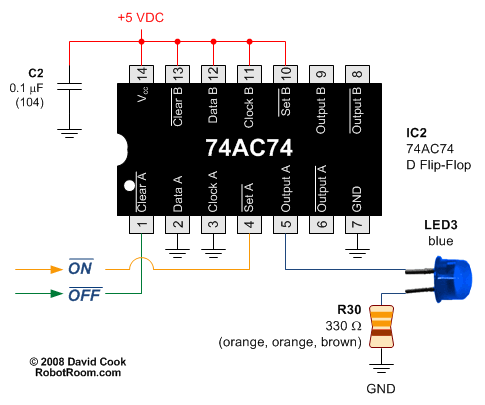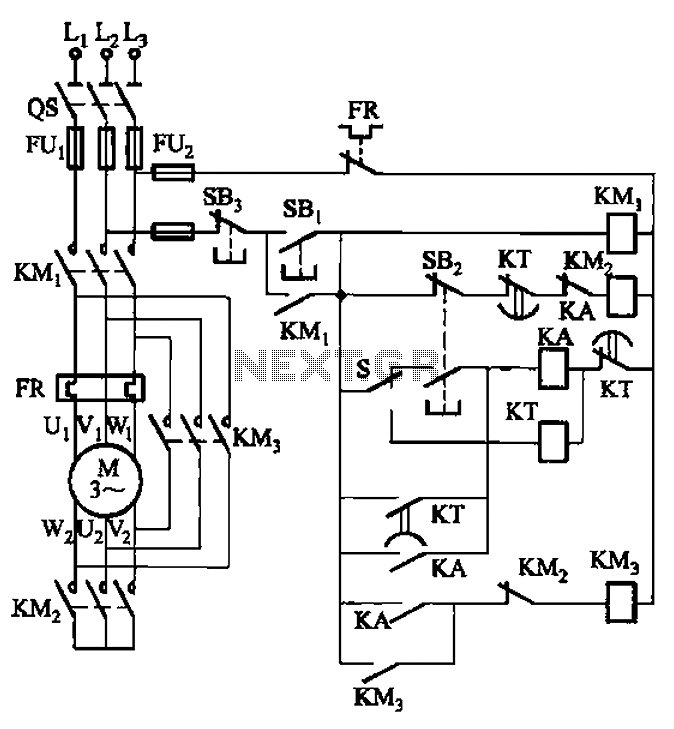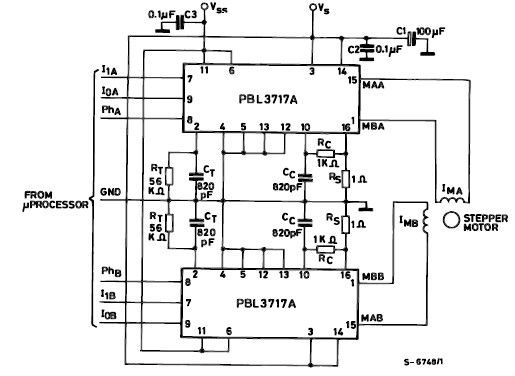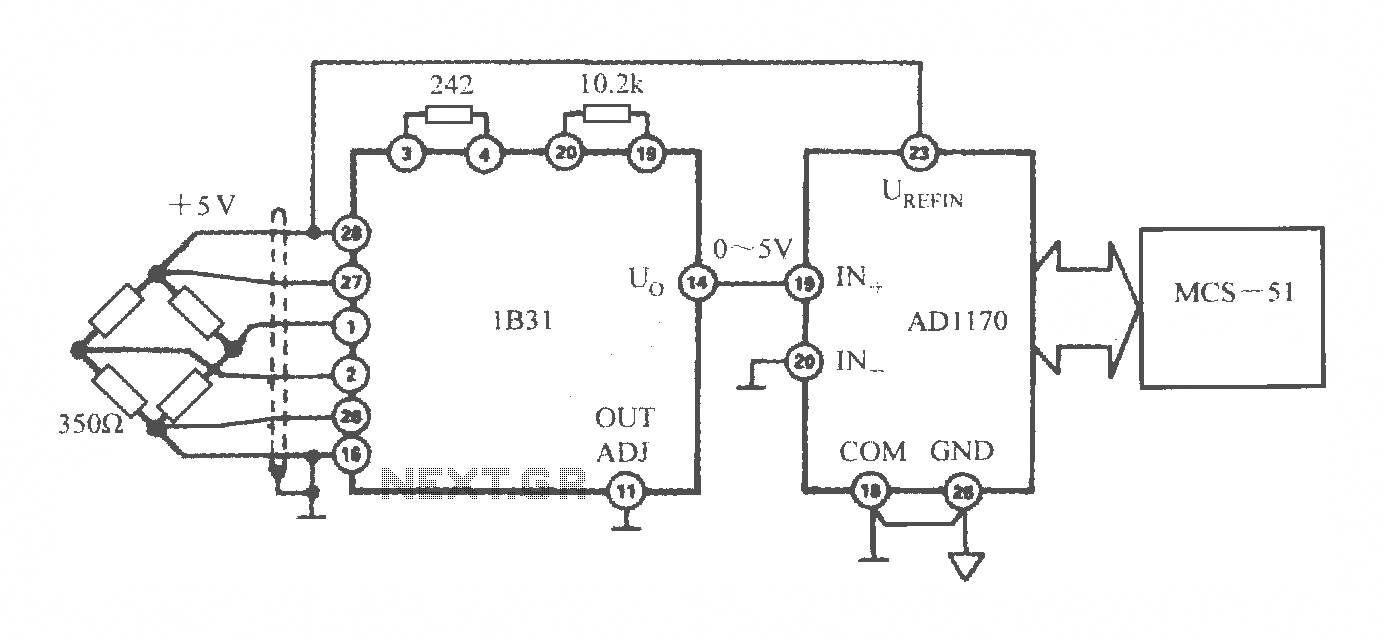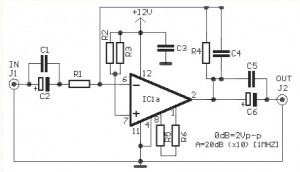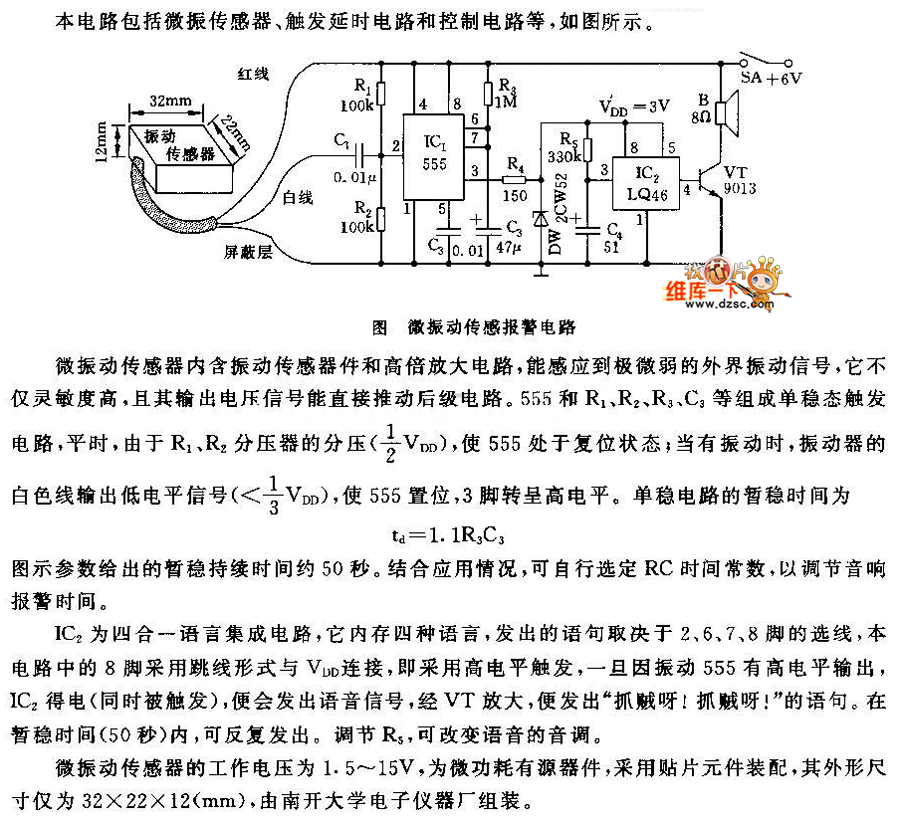
12V Battery Level Indicator Circuit
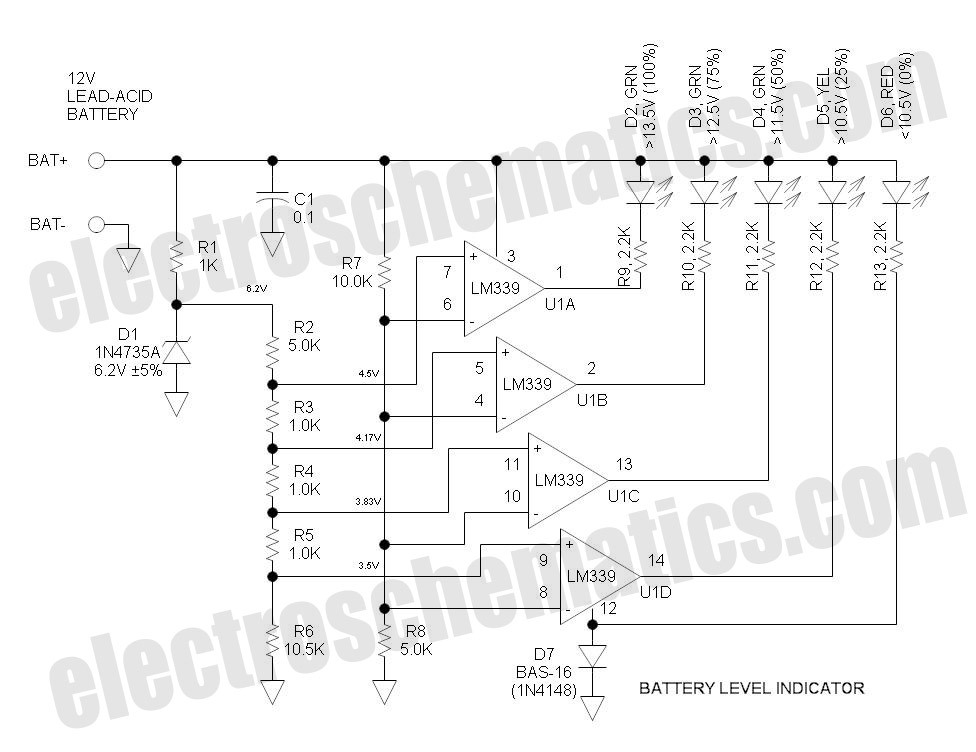
This battery level indicator features five LEDs that illuminate progressively as the voltage increases: Red indicates power connection (0%), Yellow signifies voltage greater than 10.5V (25%).
The battery level indicator circuit utilizes a series of five light-emitting diodes (LEDs) to provide a visual representation of the battery voltage level. The circuit is designed to activate each LED at specific voltage thresholds, allowing users to easily assess the battery's charge status.
The first LED, colored red, serves as a power connection indicator, illuminating when the battery is connected but not yet charged, indicating 0% charge. The second LED, colored yellow, activates when the battery voltage exceeds 10.5V, representing a charge level of approximately 25%.
As the voltage continues to rise, additional LEDs are activated at predetermined voltage levels. For instance, the third LED could illuminate at 12.0V, indicating a charge level of around 50%. The fourth LED might activate at 12.5V, representing 75% charge, while the fifth LED, typically colored green, would light up when the voltage reaches 13.0V or higher, indicating a fully charged battery.
The circuit can be implemented using a voltage divider to scale down the battery voltage to a suitable level for comparison with reference voltages. Comparators or microcontroller analog inputs can be employed to detect when the voltage crosses these thresholds, triggering the corresponding LED to light up.
This battery level indicator is particularly useful in various applications, including portable devices, electric vehicles, and renewable energy systems, where monitoring battery status is crucial for optimal performance and longevity.This battery level indicator offers (5) LEDs that light up progressively as the voltage increases: Red: Power Connected (0%) Yellow: Greater than 10.5V (25.. 🔗 External reference
The battery level indicator circuit utilizes a series of five light-emitting diodes (LEDs) to provide a visual representation of the battery voltage level. The circuit is designed to activate each LED at specific voltage thresholds, allowing users to easily assess the battery's charge status.
The first LED, colored red, serves as a power connection indicator, illuminating when the battery is connected but not yet charged, indicating 0% charge. The second LED, colored yellow, activates when the battery voltage exceeds 10.5V, representing a charge level of approximately 25%.
As the voltage continues to rise, additional LEDs are activated at predetermined voltage levels. For instance, the third LED could illuminate at 12.0V, indicating a charge level of around 50%. The fourth LED might activate at 12.5V, representing 75% charge, while the fifth LED, typically colored green, would light up when the voltage reaches 13.0V or higher, indicating a fully charged battery.
The circuit can be implemented using a voltage divider to scale down the battery voltage to a suitable level for comparison with reference voltages. Comparators or microcontroller analog inputs can be employed to detect when the voltage crosses these thresholds, triggering the corresponding LED to light up.
This battery level indicator is particularly useful in various applications, including portable devices, electric vehicles, and renewable energy systems, where monitoring battery status is crucial for optimal performance and longevity.This battery level indicator offers (5) LEDs that light up progressively as the voltage increases: Red: Power Connected (0%) Yellow: Greater than 10.5V (25.. 🔗 External reference
